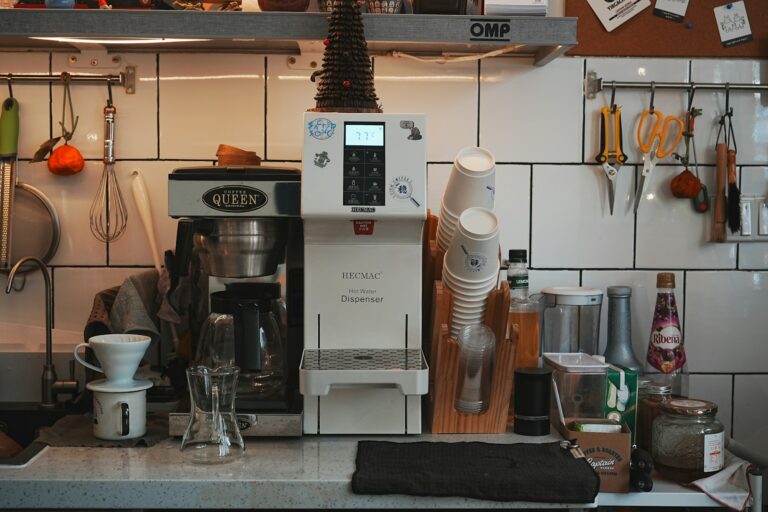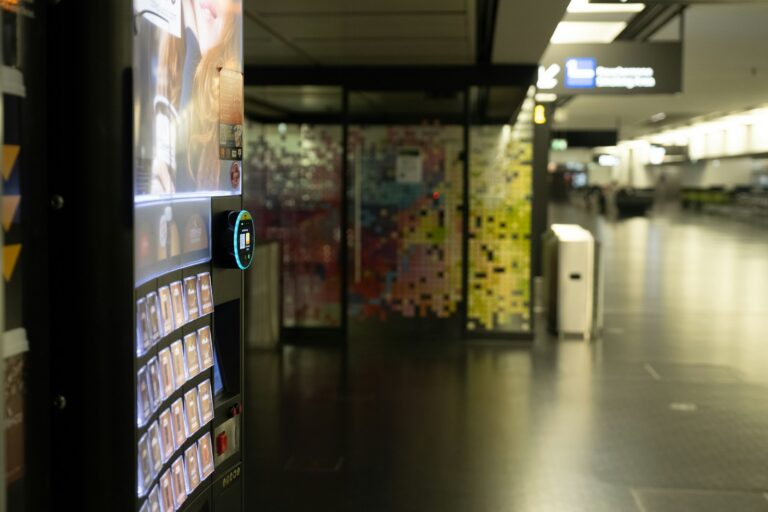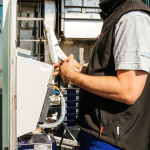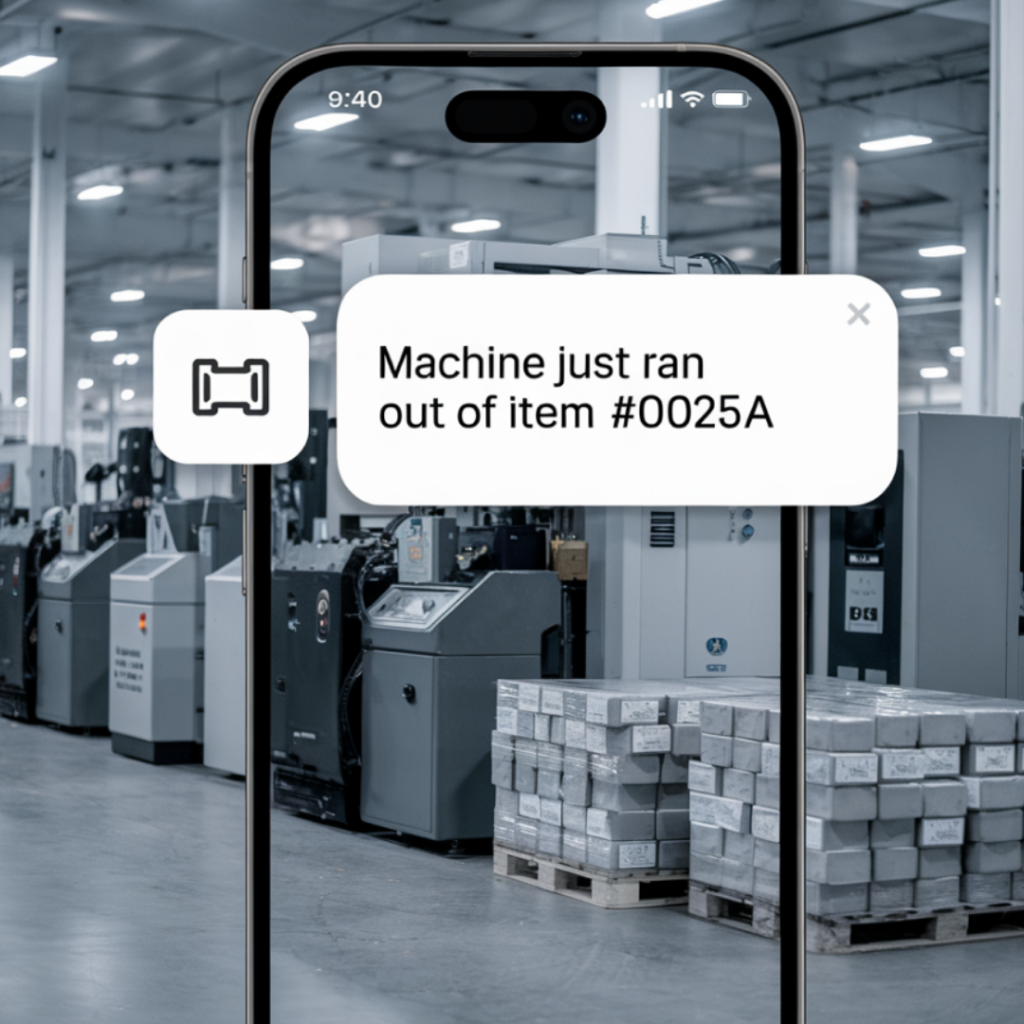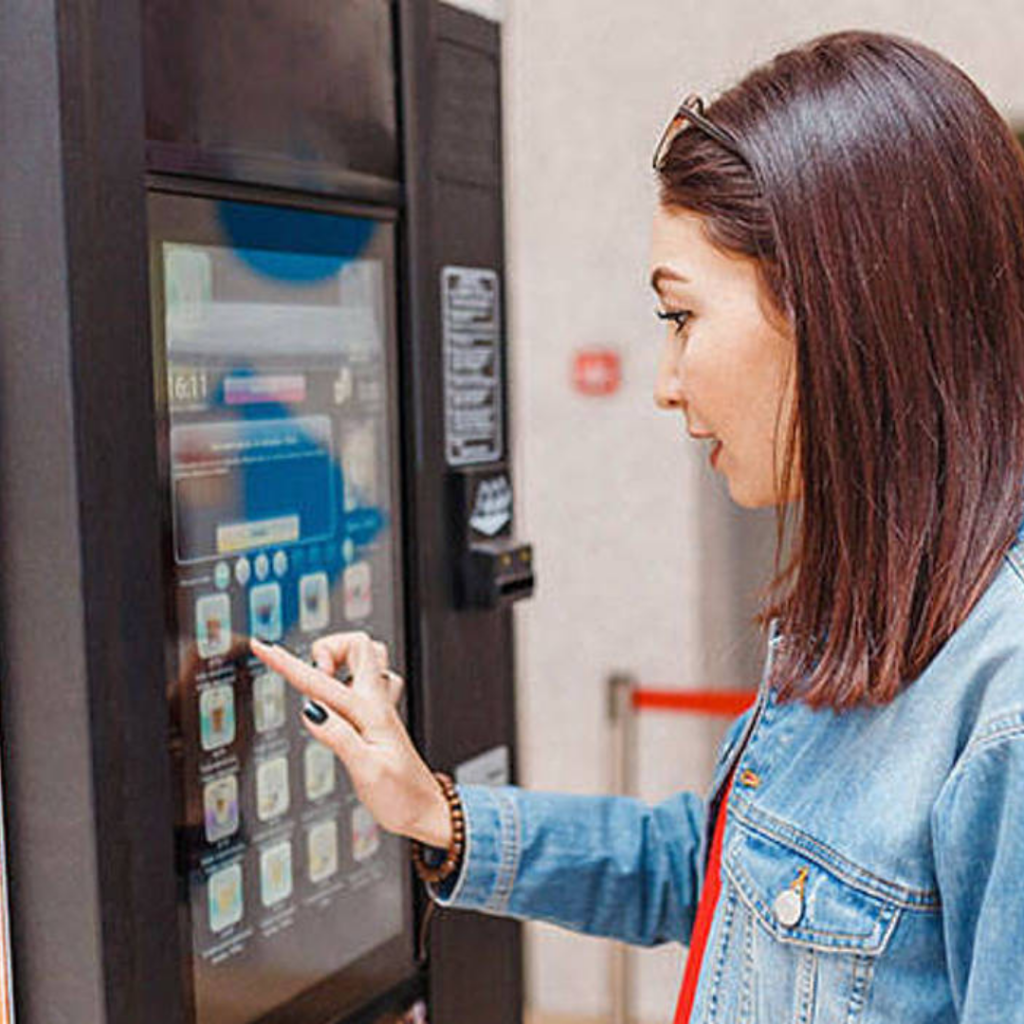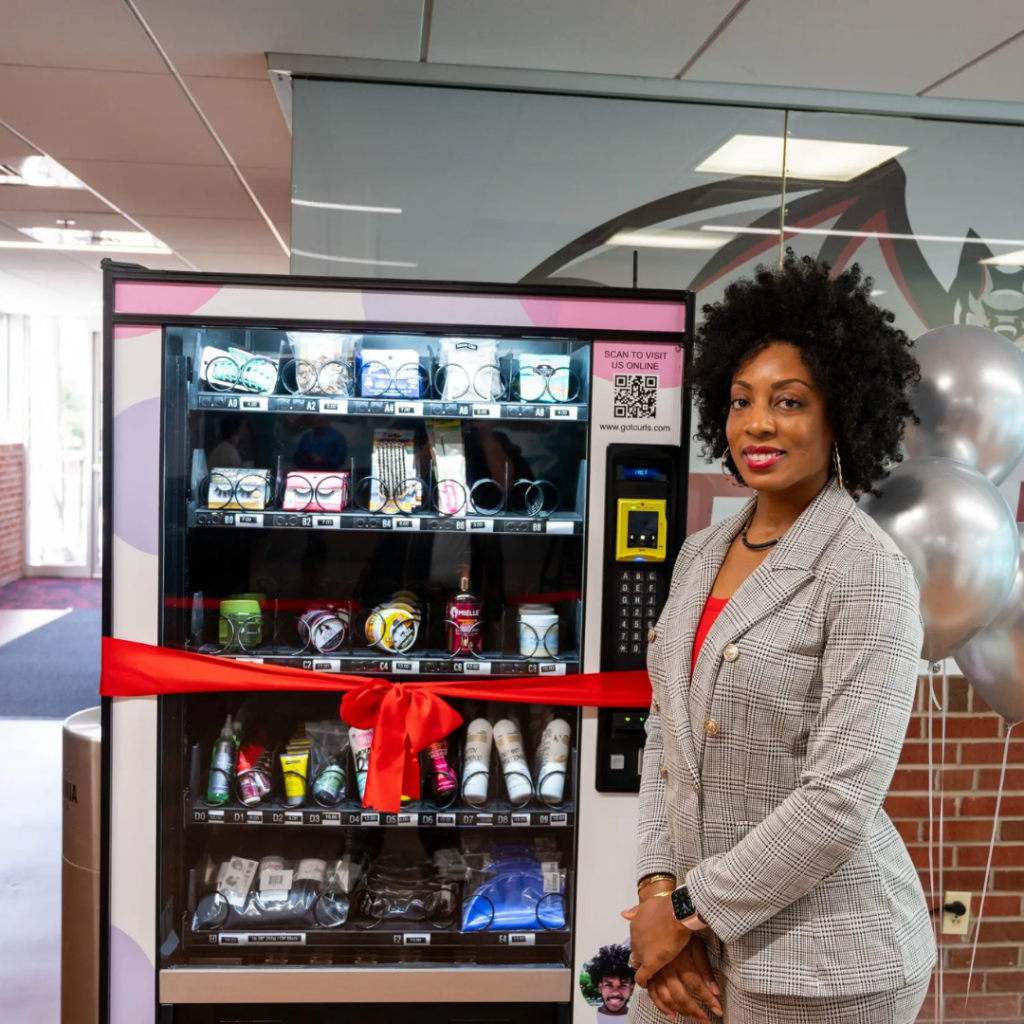Where To Buy Pizza For Vending Machines In The USA (Complete Operator Guide)

Pizza vending is growing fast because it solves a real problem. People want hot food that does not require delivery, waiting, or kitchen staff. If you choose the right pizza and the right supplier, a pizza vending machine can become one of the most profitable machines in your route. The key is sourcing pizza that cooks evenly, holds its structure, and fits your machine’s oven size. This guide explains what type of pizza works best, where to buy it, how much it costs, and how to set your prices so you can maintain strong margins.
1. Understand Your Machine Before Choosing Pizza
Not all pizza vending setups work the same. The type of pizza you buy depends on the machine you use.
Hot Pizza Vending Machines (Built-In Oven)
These machines store pizzas in a refrigerated chamber. When a customer orders, the pizza moves into a rapid bake oven inside the machine. The pizza is heated and delivered ready to eat. These machines typically use:
- 7 to 8 inch pizzas for fast cooking
- or 10 to 12 inch pizzas if the machine is built for full-size pies
Pizza format: par-baked crust or fully topped frozen pizza.
Why: bakes consistently and does not get soggy.
Combo Elevator or Fridge Vending Machines (Frozen Pizza To-Go)
These vending machines do not cook pizza. They only store and vend it as frozen or refrigerated items. Customers heat the pizza in a nearby microwave or break room oven.
Pizza format: small frozen personal pizzas or microwaveable flatbread-style pizzas.
2. Types of Pizza That Work Best in Vending Machines
Your pizza must cook evenly, avoid sogginess, and deliver a flavor customers actually want to buy again. The crust and topping style matter more than brand name.
Best Pizza Characteristics
- Par-baked crust (partially baked, not raw)
- Medium sauce thickness (not watery)
- Low-moisture shredded mozzarella cheese
- Moderate topping load (avoid heavy water release)
Best Selling Pizza Styles For Vending
- Cheese pizza (always the highest seller)
- Pepperoni pizza (second highest seller in every location type)
- Margherita (good for workplaces and campuses)
- BBQ chicken or chicken alfredo (premium upsell items)
Pizzas To Avoid
- Deep dish pizzas (do not cook evenly in fast ovens)
- Pizzas with heavy sausage or oily meats (causes sogginess)
- Vegetable-loaded pizzas (water release ruins crust)
- Four cheese blends with high fat melt (cheese separates during bake)
If in doubt, always test bake 3 to 5 pizzas in your machine before ordering cases or pallets.
Where To Buy Pizza For Vending Machines (Simple Operator Guide)
Most vending operators do not make their own pizza. They purchase frozen or par-baked pizzas from reliable suppliers that are known to bake evenly in vending machine ovens. The goal is consistency, good taste, and repeat purchases. The best pizza for vending is the one that cooks the same way every time and keeps customers happy.
The Most Common Pizza Sizes For Vending Machines
- 7 inch personal pizzas fast bake time and strong portion control
- 8 inch personal pizzas great balance of size and speed
- 10 inch medium pizzas used in premium or higher traffic locations
These sizes fit standard vending oven clearances and allow the pizza to heat evenly without burning edges or undercooking the center.
What Makes a Pizza Work Well in a Vending Machine
- Par-baked crust (not raw dough)
- Medium thickness sauce with low water release
- Low moisture mozzarella cheese to prevent pooling
- Even topping distribution for consistent heating
Cheese and pepperoni are always the top sellers. Specialty flavors should only be introduced after the core two sell consistently.
Where Most Vending Operators Buy Pizza
- Sysco good national coverage, consistent frozen pizza inventory
- US Foods reliable for cheese, pepperoni, and par-baked crust lines
- Performance Food Group (PFG) strong in schools, hospitals, and workplaces
- Restaurant Depot walk-in purchasing, perfect for testing flavors
- Gordon Food Service Store (GFS) case-lot frozen pizzas that bake cleanly
- WebstaurantStore online ordering for sample cases or small route launches
Operators often find a brand they trust, check bake timing once, and stick with it to maintain consistency across all locations.
Typical Pizza Pricing Operators Report
| Pizza Size | Average Wholesale Cost Each | Recommended Vend Price | Realistic Profit Margin |
|---|---|---|---|
| 7 inch personal | $2.10 to $3.10 | $6.49 to $8.99 | 55% to 65% |
| 8 inch personal | $2.40 to $3.60 | $7.49 to $9.99 | 55% to 65% |
| 10 inch medium | $3.10 to $4.90 | $8.99 to $12.49 | 50% to 60% |
Energy cost per vending bake is usually between $0.10 and $0.18, depending on bake time and oven type.
The Trusted Vendor Rule
In vending, taste consistency matters more than brand names. Once you find a pizza that bakes well and gets good customer feedback, stick to it across all your machines. Your repeat customers will expect the same taste every time.
Recommended Pizza Brands For Vending Machines (USA)
These brands are widely used by vending operators because they offer consistent baking performance, stable supply, and predictable flavor. The key is always to test a case before committing to a full route rollout. Every oven profile and machine airflow is a little different, so you want to confirm even heating and crust crispness.
1. National Brands (Easy To Source, Consistent Quality)
These brands are commonly available through Sysco, US Foods, PFG, GFS Stores, and Restaurant Depot. They are dependable starter choices because they are already designed for foodservice ovens.
- Rich’s 7 inch and 8 inch fully topped cheese and pepperoni pizzas
- Baccio low moisture mozzarella pizzas (consistent melt and browning)
- UNO personal pizzas (commonly seen in freezer case multipacks and foodservice channels)
- Bellatoria Foodservice thin crust cheese and pepperoni SKUs
- Red Baron Foodservice 7 inch single serve pizzas
Why choose these: They bake evenly, they do not release too much moisture, and case quantities are predictable.
2. Value Brands (Low Cost, Good Margin, Common in Schools and Factory Routes)
These pizzas are very cost efficient and designed to bake quickly with minimal waste. They are used heavily in schools, cafeterias, and industrial vending sites.
- Tonys 5×6 school rectangle pizzas or 7 inch personal cheese and pepperoni
- BOSCO cheese stick and flatbread style pizzas (good for fast bake cycles)
- BakeCrafters whole grain and reduced-sodium pizzas
- Landmark foodservice personal pizzas (white and wheat crust options)
- Smart Pizza school-compliant frozen pizza options
Why choose these: Lower cost per unit helps maintain strong margins, and the flavor profile is familiar to school and break room audiences.
3. Premium Regional and Craft Brands (For Taste-First Locations)
If your location is a university, apartment complex, hotel, or high-traffic lobby, taste quality matters more than cost. These brands are known for better crust structure and stronger flavor profiles.
- Lotzza Motzza (Wisconsin-based, heavy cheese load, strong customer reaction)
- Home Run Inn (Chicago-style thin crust that reheats well)
- Screamin’ Sicilian (premium cheese and pepperoni, notable flavor impact)
- Jack’s Foodservice Line (even bake and wide regional availability)
- Local regional frozen pizza producers in your state (often best flavor-to-cost ratio)
Why choose these: Higher perceived value allows higher vend prices and stronger repeat sales in residential or campus environments.
How To Choose Which Category To Use
- Use National Brands when starting out or testing your first machine.
- Use Value Brands in schools, warehouses, factories, and 24 hour workplaces.
- Use Premium Brands in apartments, hotels, student housing, and resorts where guests compare taste and are willing to pay more.
Realistic Price and Margin Example (Average Route)
| Brand Category | Cost Per Pizza | Suggested Vend Price | Approx. Margin |
|---|---|---|---|
| National Brands | $2.60 to $3.40 | $7.49 to $9.99 | 55% to 65% |
| Value Brands | $1.90 to $2.70 | $6.49 to $8.49 | 60% to 70% |
| Premium Regional | $3.60 to $5.10 | $9.99 to $12.49 | 50% to 60% |
Energy cost for a bake cycle usually adds $0.10 to $0.18, depending on oven speed and insulation.
How To Find Pizza Suppliers In Your State
The easiest way to source pizza for a vending machine is to contact suppliers that already sell to restaurants, schools, cafeterias, and convenience operators. You are not looking for retail brands. You are looking for foodservice products that bake clean, hold shape, and come in predictable case packs.
1. Use These Search Phrases On Google
Type these into Google exactly as written. They are designed to bring up foodservice suppliers, not grocery stores.
- frozen pizza wholesale near me
- par baked pizza supplier + your city
- foodservice pizza distributor + your state
- restaurant supply frozen pizza + delivery
- private label frozen pizza manufacturer + state name
Example: par baked pizza supplier Ohio will return local producers, commissaries, and foodservice warehouses.
2. Contact These Distributor Networks
These companies already sell to restaurants and schools, and they are used to repeat ordering and frozen storage handling.
- Sysco (national coverage)
- US Foods (national coverage)
- Performance Food Group (PFG)
- Gordon Food Service (GFS Store and commercial trucks)
Ask the rep for:
- 7 inch, 8 inch, and 10 inch fully topped frozen pizzas
- Case pack size and weight
- Bake-from-frozen vs partial thaw recommendations
- Tasting samples to test in your vending machine oven
You do not need to overthink this. A distributor rep will send you the exact SKU list tailored to your area.
3. Check Restaurant Supply Stores For Sampling
These are the best places to test products without committing to pallet or contract volume.
- Restaurant Depot
- GFS Store
- CHEF’STORE
Buy 2 to 3 brands, bake them in your machine, and compare:
- Crust crispness
- Cheese melt quality
- Sauce flavor balance
- Cook time and evenness
Pick the one that works best and stick with it across all machines for consistency.
4. Use Operator Communities (These Are Gold)
Vending operators openly share supplier recommendations and pricing experiences. They often mention brands that are not visible in public search results.
Recommended communities:
- Facebook: Vending Operators Hub
- Facebook: Vending Business for Beginners
- Reddit: r/vending
- Reddit: r/smallbusiness
When posting, ask this exact question:
“What pizza brand is baking evenly in your hot pizza vending machine and what size case do you run?”
Operators reply fast because pizza is a shared problem everyone has been through.
5. For Premium Flavor, Search Local Frozen Pizza Makers
Many regions have their own frozen pizza brands that taste better than national chains. These are often the best choice for apartments, universities, hotels, and mixed-use buildings.
Search Google for:
- frozen pizza manufacturer + your state
- local frozen pizza brand + wholesale
- commissary kitchen pizza supplier + city
If the brand is well liked locally, your machine becomes the easy hot pizza stop in minutes.
Pizza Pricing and Profit Margins for Vending Machines
Pizza profit depends on three things: the size you stock, the supplier you buy from, and how your location responds to pricing. Most vending operators aim for a 55 to 65 percent margin. The goal is simple: good taste that customers will buy again without you having to change product often.
Typical Wholesale Costs (Real Operator Ranges)
These prices come from Restaurant Depot, GFS Store, Sysco, US Foods, and independent foodservice distributors. The numbers represent what operators commonly pay when purchasing case quantities.
| Pizza Size & Type | Common Case Format | Average Cost Per Pizza | Recommended Vend Price |
|---|---|---|---|
| 7 inch Cheese (Personal) | 20 to 30 per case | $2.10 to $3.10 | $6.49 to $8.49 |
| 7 inch Pepperoni | 20 to 30 per case | $2.60 to $3.60 | $6.99 to $8.99 |
| 8 inch Cheese or Pepperoni | 18 to 24 per case | $2.40 to $3.60 | $7.49 to $9.99 |
| 10 inch Medium Cheese | 12 to 20 per case | $3.10 to $4.90 | $8.99 to $11.99 |
Energy cost per bake cycle: usually $0.10 to $0.18 depending on oven configuration.
What These Prices Mean In Real Operation
7 and 8 inch pizzas are your day-to-day volume workhorses. They heat evenly, fit standard vending boxes, and keep customers satisfied without feeling heavy. The 10 inch pizza is best used in:
- Apartment complexes
- Hotels and airports
- College dorm and student housing
- Late night traffic locations
Those audiences are willing to pay more for a larger meal and convenience.
Example Profit Calculation
Let us take an 8 inch pepperoni pizza as a real-world example:
- Cost from distributor: $3.10 each
- Energy cost per bake: $0.14
- Total cost to serve: about $3.24
- Vend price: $8.99
Profit per sale: about $5.75
Margin: about 64 percent
How Operators Decide Which Pizza To Use
Operators rarely switch brands once something works. Consistency beats experimentation. The pizza that:
- Heats without burning the cheese
- Does not get soggy in the center
- And gets repeat purchases
is the pizza you stay with.
Machines run smoother when flavor stays the same. Customers remember taste. If a pizza is good enough that someone buys it twice, that machine becomes part of their routine.
Reliable Pizza Brands For Vending Machines (With What To Ask For)
These pizza brands are used by vending operators, cafeterias, and foodservice locations because they are consistent, bake evenly, and fit common vending oven sizes. When contacting suppliers, use the exact product descriptors shown below. It makes the process easier and gets you the right samples faster.
1. Rich’s Foodservice Pizza
Why operators use it: Par-baked crust holds structure, cheese melt is even, and bake time is predictable.
What to ask your distributor for:
- Rich’s 7 inch or 8 inch fully topped cheese pizza
- Rich’s 7 inch or 8 inch pepperoni pizza (low moisture cheese blend)
Works well with: Machines that bake directly from frozen (no thaw needed).
Common suppliers: Sysco, US Foods, PFG, GFS Store, Restaurant Depot
2. Red Baron Foodservice Single-Serve Pizzas
Why operators use it: Familiar flavor profile and strong customer recognition.
Ask for: “Red Baron single-serve cheese or pepperoni, frozen foodservice case pack.”
Notes: Tends to bake quickly and does not release excess sauce moisture.
3. UNO Foodservice Personal Pizzas
Why operators use it: Good cheese stretch and consistent browning in fast ovens.
Ask for: “UNO 7 inch or 8 inch personal frozen cheese or pepperoni, foodservice pack.”
Suppliers: Restaurant Depot, GFS, WebstaurantStore
4. Lotzza Motzza Personal and Medium Pizzas
Why operators use it: High cheese load and strong flavor reaction, especially in student housing and apartments.
Ask for: “Lotzza Motzza foodservice frozen pizza, 7 inch or 10 inch case.”
Note: Higher cheese = slightly longer bake time. Test once to set timing.
5. Jack’s Foodservice Line
Why operators use it: Thin crust cooks evenly and is forgiving in different oven profiles.
Ask for: “Jack’s foodservice, thin crust, cheese or pepperoni, 7 inch or 10 inch.”
Often stocked at: GFS Store, regional distributors
6. Local and Regional Frozen Pizza Producers
Why these are powerful: Customers notice the difference and remember your machine.
How to find them:
- Google: frozen pizza manufacturer + your state
- Google: private label pizza company + your region
- Ask Restaurant Depot or GFS Store managers what regional suppliers deliver there
What to ask when calling:
- Do you produce 7 inch, 8 inch, or 10 inch sizes?
- Are the pizzas par-baked or fully baked?
- What is the case weight and number of pizzas per case?
- Can I purchase a sample case for testing?
How To Request Samples (Use This Script)
Use this when calling Sysco, US Foods, PFG, or a regional distributor:
“Hi, I run a hot pizza vending operation. I am looking for 7 inch or 8 inch fully topped par-baked pizzas that bake cleanly from frozen. I would like to sample 2 cheese and 2 pepperoni SKUs. Can you send me your foodservice pack product list for those sizes?”
This tells the rep exactly what you need with no confusion.
What To Test When Baking Samples
- Cheese melt pattern (no pooling or burning)
- Crust texture (crisp texture, not doughy or tough)
- Sauce water release (soggy center means reject)
- Consistency across 3 to 5 pizzas, not just one
If a pizza tastes good once but varies on the second or third bake, that product will cause refunds and you should move on.
Conclusion
A pizza vending machine works best when the pizza is consistent, simple to handle, and bakes evenly every time. The goal is not to offer the most variety. It is to offer a pizza that customers trust and come back for. Once you find a cheese and pepperoni that cook cleanly in your machine and receive positive feedback, stay with that product. Consistency is what builds repeat sales.
Start with reliable 7 inch and 8 inch pizzas because they heat quickly, fit standard vending ovens, and work well in most locations. Use 10 inch pizzas only where customers expect a larger meal, such as apartments, college housing, hotels, airports, and evening traffic sites.
Buy your first cases from Restaurant Depot, GFS Store, or WebstaurantStore so you can test multiple brands without committing to large orders. When you know which pizza performs best in your machine, move up to Sysco, US Foods, or PFG for better pricing and scheduled delivery.
The most successful vending operators keep their menu stable, track which locations sell the most pizza, and restock on a consistent schedule. With the right pizza and the right sourcing approach, a pizza vending machine can become a reliable, high-margin part of your route.

